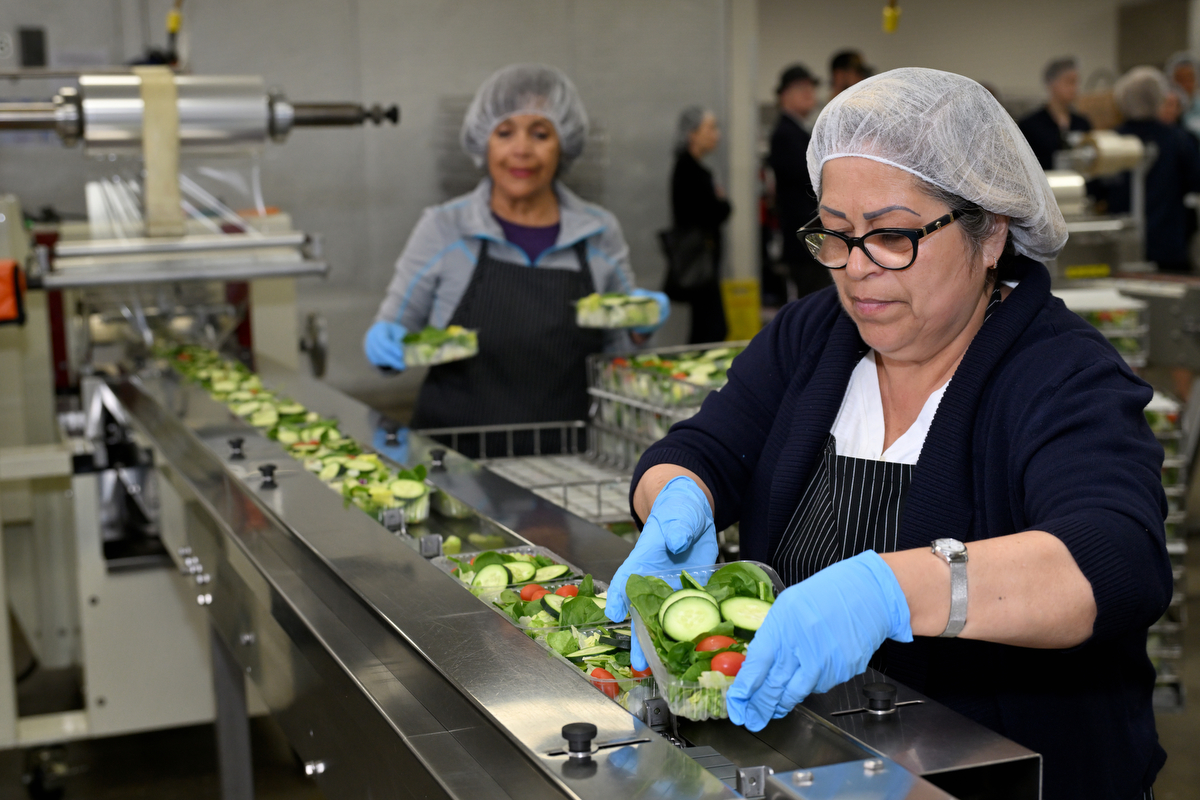By Greg Mellen
Tucked in the back of a warehouse in an industrial district below Interstate 5 is the largest restaurant in southern Orange County. It’s easy to miss, with only a small stenciled sign that reads “Food service” on a block wall at the back of the property.
Follow that sign and you find a slightly less modest sign on a door that reads “Capo Cuisine.” And behind that door, dietary habits are being rewritten for more than 54,000 potential patrons – the student population of Capistrano Unified School District (CUSD).
The CUSD kitchen produces more than 20,000 meals daily to 36 elementary and K-8 schools, as well as assisting on-site kitchens at middle and high schools and vending meals to 3 charter schools.

Photo by Steven Georges/CUSD Insider
Leading the way is Kristin Hilleman, Director of Food and Nutrition Services. Hilleman, in her ninth year with CUSD and 18th in the food industry, is a leading figure in the “movement to scratch cooking,” which replaces processed food with fresh, locally produced nutrition.
In collaboration with Eat Real, a nonprofit committed to improving nutrition for school children and districts nationally, Hilleman has been at the forefront of a back-to-roots movement in school food.
“This is a showcase of what’s possible,” Hilleman said of CUSD Food and Nutrition Services.
In November, CUSD became the first district in the Southland and largest anywhere to earn certification from Eat Real for making changes to its menu and nutrition practices that brought healthier foods to cafeteria tables throughout the district.
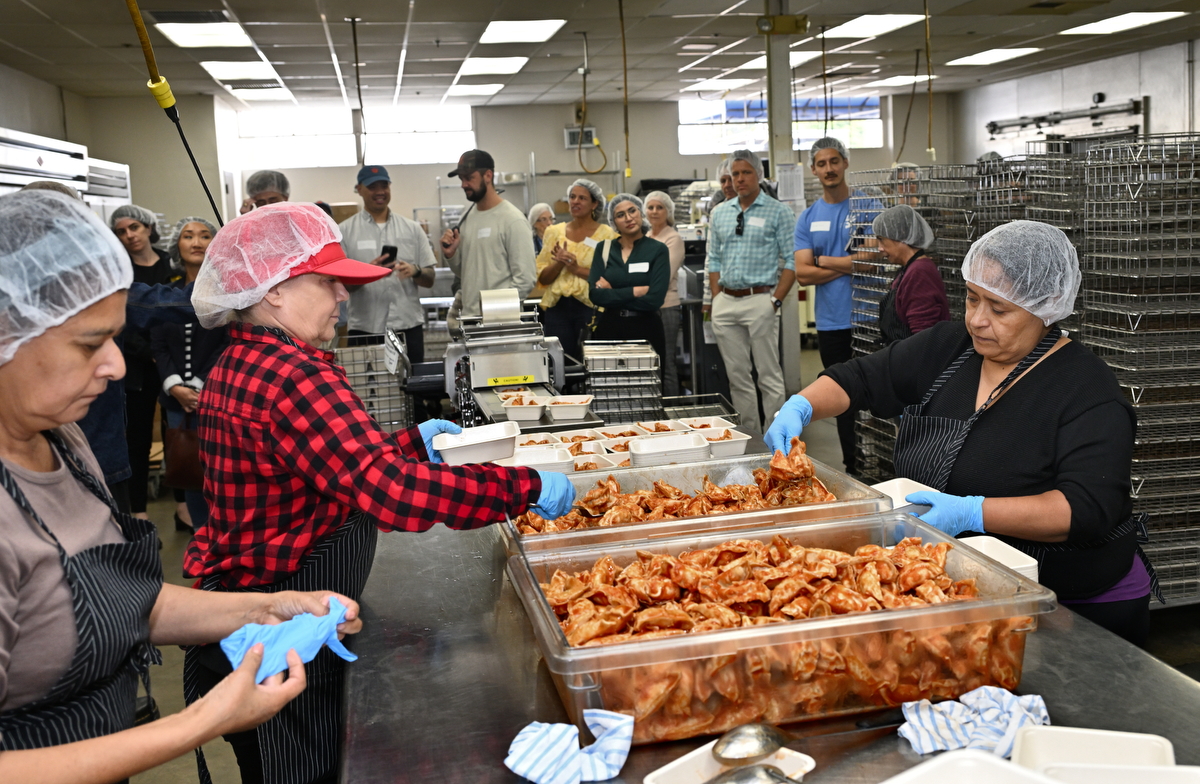
Photo by Steven Georges/CUSD Insider
This school year, the district has received produce from 17 organic and regenerative providers and family farms — and counting — from across the state to provide the ingredients for a farm-to-plate menu.
The district recently hosted about 30 distributors, vendors, legislative representatives and personnel, and food service leaders for a tour and demonstration to showcase how CUSD and Eat Real work together to bring delicious, nutritious and planet sustaining meals to students daily.
Due to modern food production and processing, children are suffering from poor health, including obesity, heart disease, type 2 diabetes, and depression, according to Nora La Torre, the Chief Executive Officer of Eat Real.
“It’s our food system that’s making kids sicker, but it’s also what can make them healthier and schools are the biggest lever,” La Torre said. “Schools are the biggest restaurant chain in the country, bigger than Starbucks, McDonald’s and Subway combined. It’s the biggest restaurant in town and we believe it can be the best restaurant in town.”
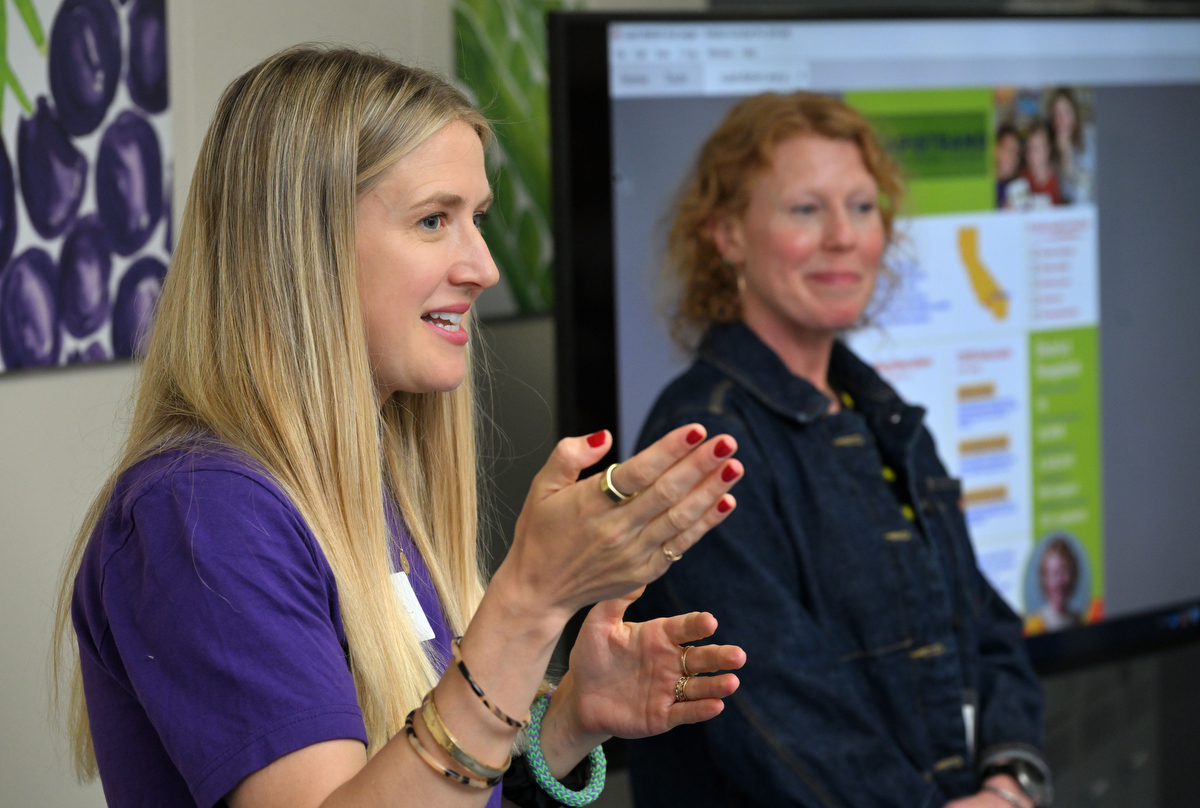
Photo by Steven Georges/CUSD Insider
It’s certified
Eat Real is a national nonprofit that has been advocating for better nutrition and overall food practices in schools. Among its services are free certifications to schools based on proven standards ranging from reducing sugar, to more nutritious and varied menus, to sustainability and reduced waste, to education.
There are four tiered certification levels: green, silver, gold, and platinum. CUSD is at the green level.
Since 2019, Eat Real has helped more than 600 schools make more than 129 million nutritious meals available annually to 360,000 eligible students.
“It elevates our program and shows we’ve done work to move beyond USDA regulations,” Hilleman said of the certification. “It shows we’re going above and beyond.”
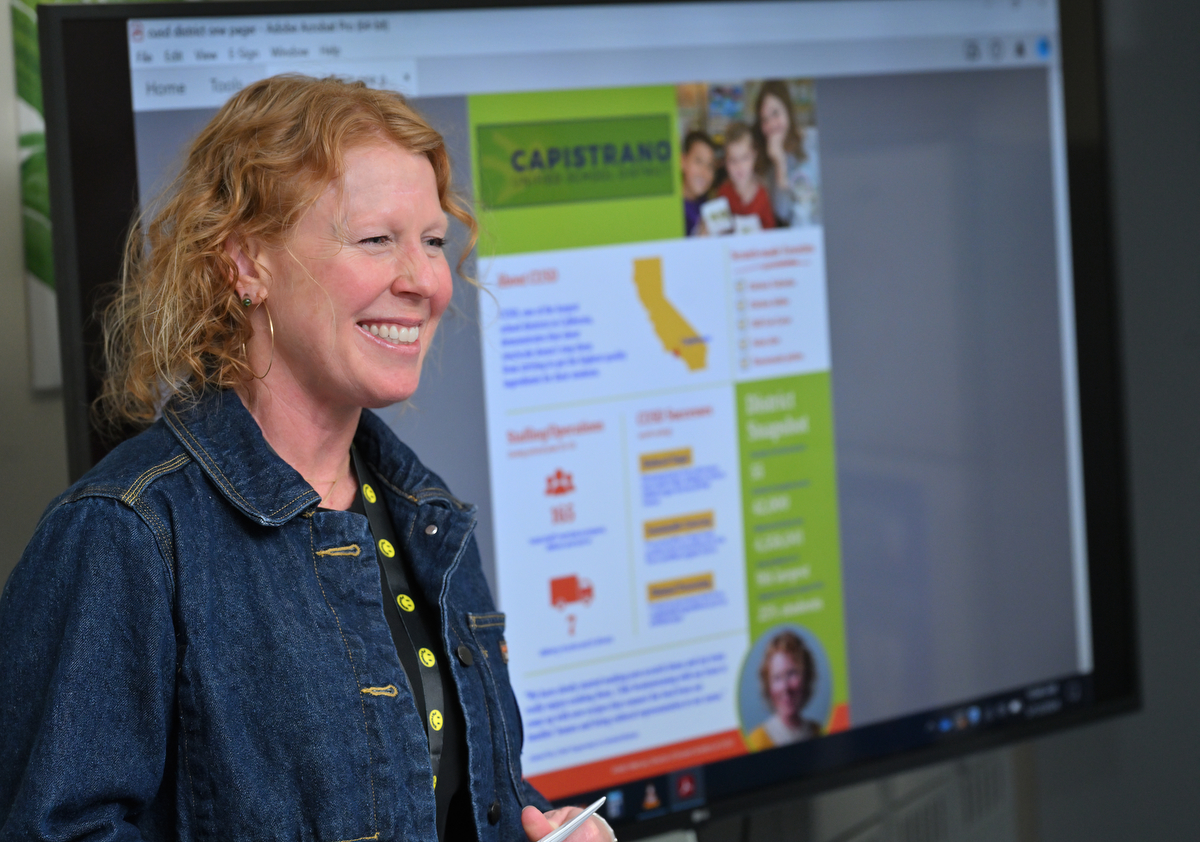
Photo by Steven Georges/CUSD Insider
Hilleman said she was wary when she was first approached by the nonprofit.
“I said, ‘I don’t know if we’re the district for you,’ ” she said, doubting CUSD had the resources or infrastructure to meet the standards. “There are the haves and have-nots of kitchen infrastructure and we’re have-nots.”
However, the nonprofit persevered.
“They said, ‘We want you to be our first large district,’” Hilleman said. “Eat Real dived into our menu.”
What emerged over a two-year process were attainable and sensible goals, some of which were evidenced at the demonstration and tour, which ended, fittingly, with lunch. The proof was in the pudding, or lunch choices, featuring Mary’s Free Range Chicken drumsticks, homemade elote, and freshly prepared salad. Local citrus from Dickinson farms was also served. All are available at times at district cafeterias.

Photo by Steven Georges/CUSD Insider
CUSD Board Trustee Gila Jones said that meals for Board members during closed session meetings are now ordered from CUSD Food and Nutrition Services due to the improved quality of the menu. In the past, the Board had contracted with restaurants for catered meals.
A favorite item offered in the cafeterias on special occasions (and maybe soon to a Board meeting), is a Filipino chicken adobo, by District Supervising Chef Joana Flor.
The tour had its desired effect. Based on what he saw, Victor Trejo, Interim Director of Nutrition Services for the Fullerton School District, wanted to hear more.
“I can learn the process from Eat Real and see about bringing it into Fullerton,” he said.

Photo by Steven Georges/CUSD Insider
Back to basics
Across the country, there is an ongoing effort to bring healthier foods to campuses, and with good reason. The literature is overwhelming that healthy food leads to a healthier school climate.
According to a school-meals report by the nonprofit Healthy Schools Campaign, “improved nutrition in schools leads to increased focus and attention, improved test scores and better classroom behavior.”
The push to bring healthier foods to cafeterias accelerated when California became the first state to make school meals available for all students and began providing $15 billion in state and federal funds for meals, according to Cal Matters.

Photo by Steven Georges/CUSD Insider
In July, CUSD continued offering free breakfast and lunch to all registered students, regardless of family income. According to Hilleman, despite meals being free and available to all, only about 36 percent of students take advantage of the school meals.
Since the 1980s national politics pushed school nutrition programs into pro-processed, industrial food practices. School programs, many serving poorer communities, “lost a lot of luster,” Hilleman said.
“It was considered a welfare program and stigmatized,” Hilleman said of free school meals.
During the tour, Hilleman showed the process staff members go through preparing meals, including stations where special-ed students from the Adult Transition Program work and gain vocational experience, and talked about her desire to make CUSD schools better equipped for scratch cooking.
Her ultimate goal, she says, is for the federal government to enact a universal food law to “ensure all kids have access to healthy, nutritious, high quality food every day at school.” Because, as she said, “Food really is medicine. It’s a big deal to me.”

Photo by Steven Georges/CUSD Insider

Photo by Steven Georges/CUSD Insider
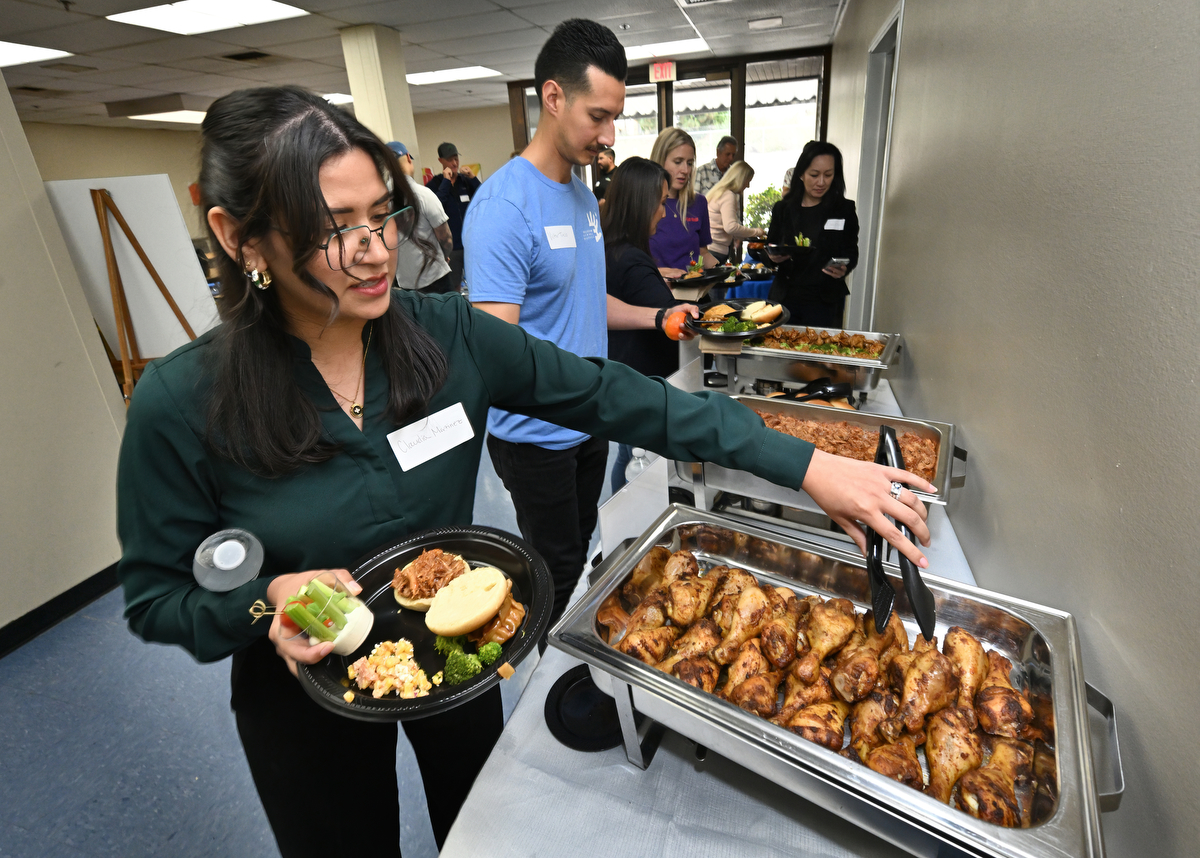
Photo by Steven Georges/CUSD Insider
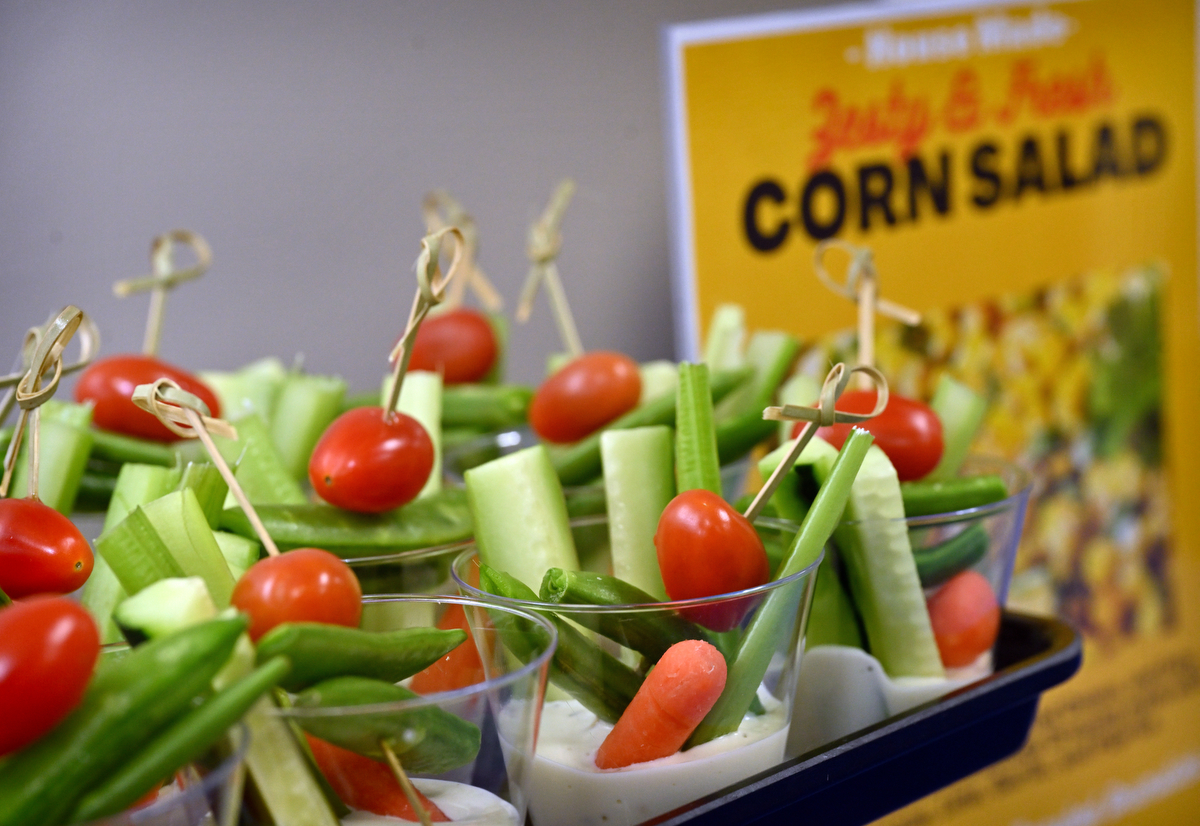
Photo by Steven Georges/CUSD Insider

Photo by Steven Georges/CUSD Insider
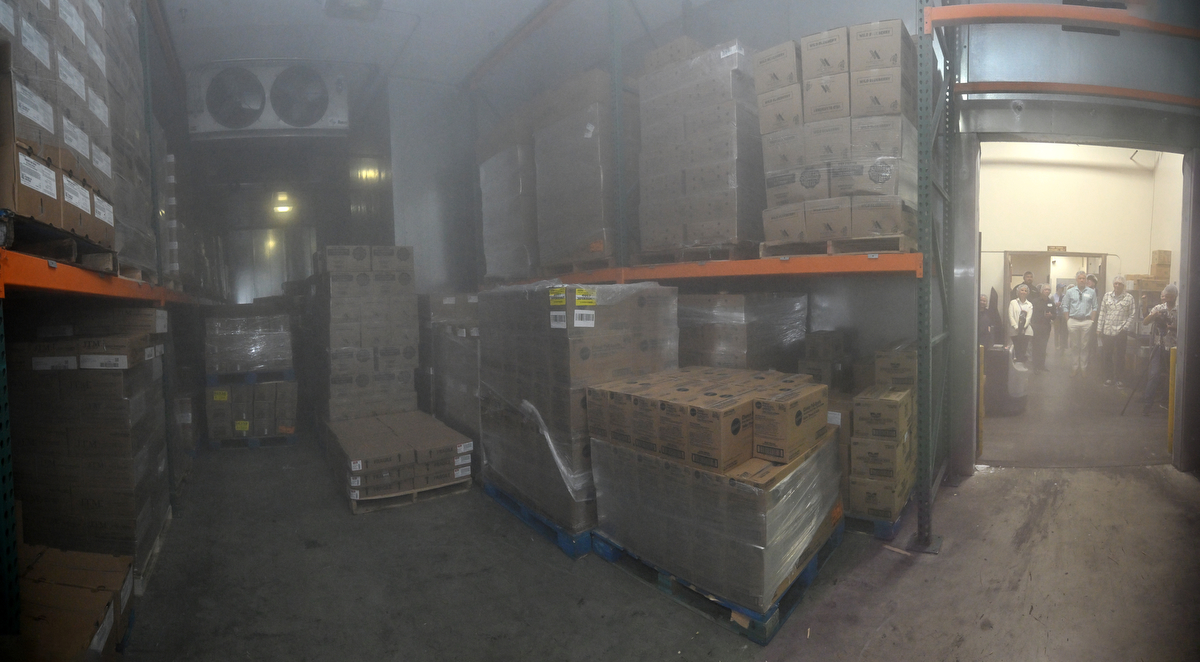
Photo by Steven Georges/CUSD Insider
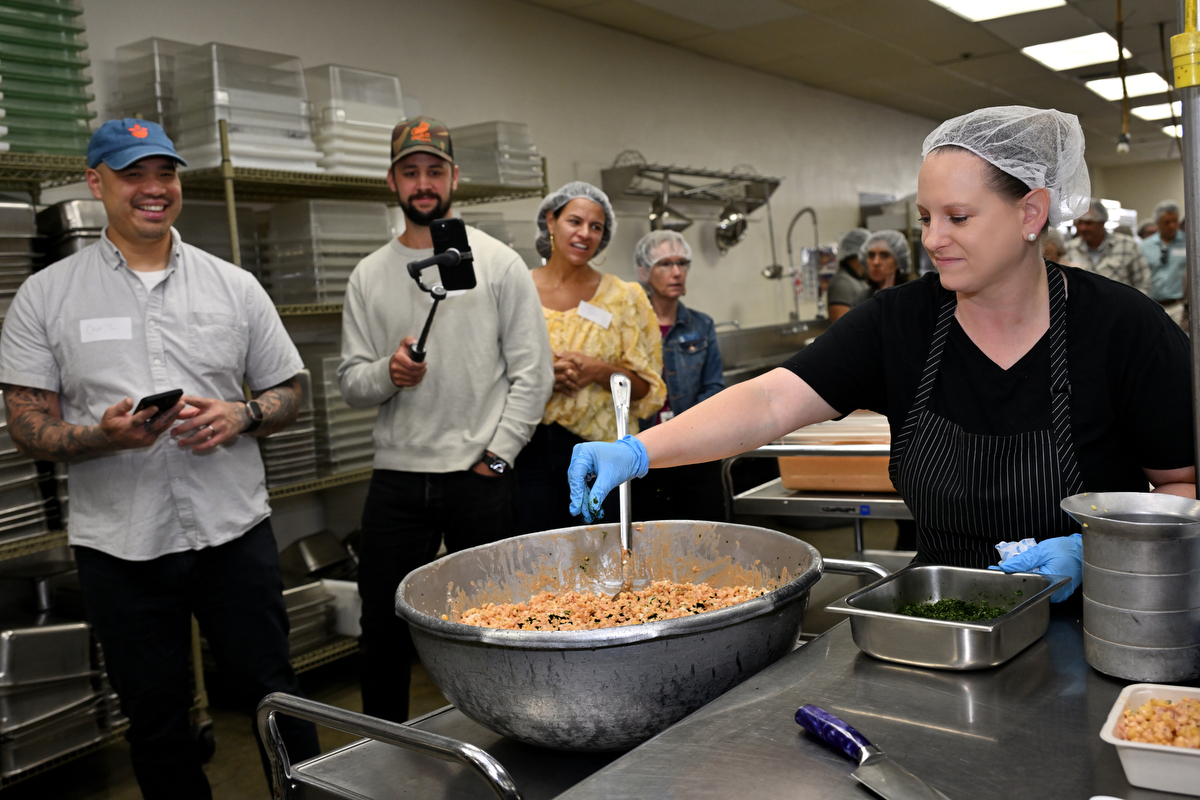
Photo by Steven Georges/CUSD Insider

Photo by Steven Georges/CUSD Insider

